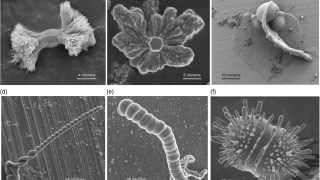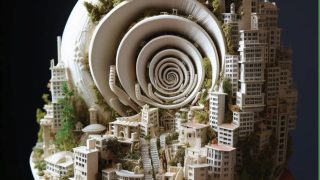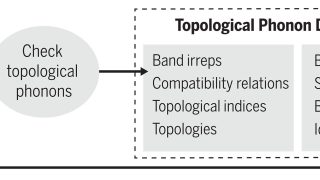
The morphogenetic mechanism of different biomorphs is independent of pH
The bottom-up design of hierarchically organized nanostructures is a powerful strategy to achieve new materials with innovative functionalities. To a large extent, this approach takes inspiration from the ability of living organisms to engineer hybrid nanocomposites both for structural and functional purposes. Intense research has been dedicated to synthesizing biologically inspired textures and shapes mimicking […]








